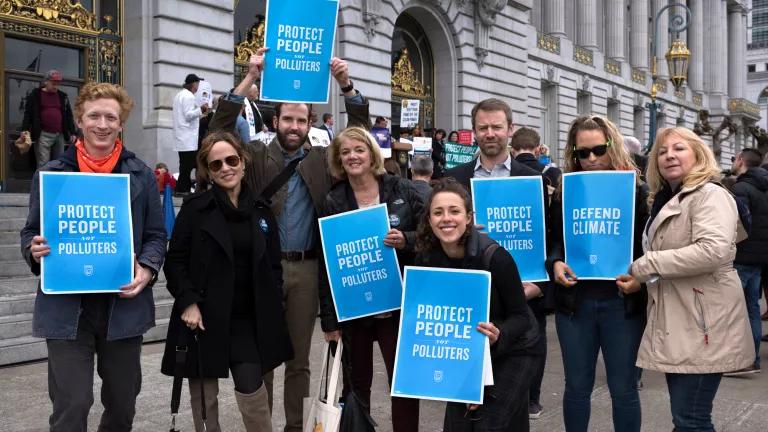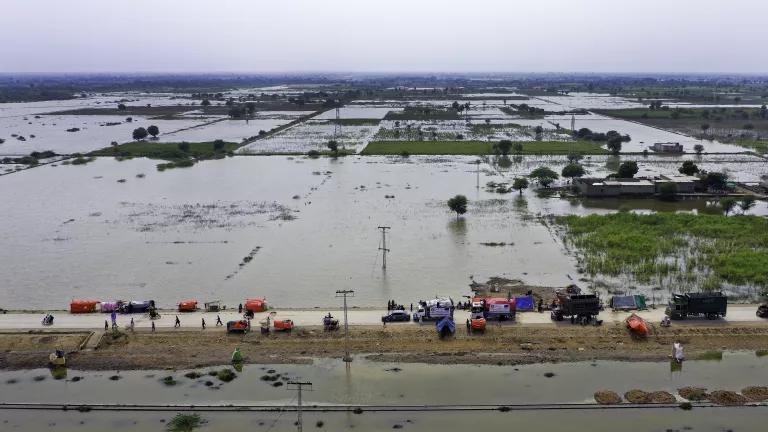Addressing Climate-Related Inequality with Local Healthcare

The last two summers have been tough. Wildfires raging through the West right now are producing choking smoke, putting California’s Bay Area under a health advisory and impacting air quality states away. Sweltering temperatures across the globe made July deadly in places like Quebec, where about 70 people perished from heat-related causes. We’re also coming up on one year since record-breaking Hurricanes Harvey, Maria, and Irma caused widespread devastation across Texas, Florida, and Puerto Rico. Earlier this month, the Government of Puerto Rico reported that the number of deaths from Hurricane Maria totaled 1,427, far outnumbering the prior official estimate of 64 deaths.
Climate change doesn’t affect everyone’s health equally, in large part due to centuries of institutional and systematic racism. Coupled with other ongoing sociodemographic inequities, vulnerability to climate change impacts is heightened for at-risk demographic groups because of their limited access to health care. Local health departments have a unique opportunity to collaborate with the communities they serve to provide comprehensive, inclusive, and equitable care in the face of increasing health threats from climate change.
The Public Health Institute, the American Public Health Association (APHA), the Kresge Foundation, and the California Department of Public Health, have just published a new report called “Climate Change, Health, and Equity: A Guide for Local Health Departments.” The extensive document has a heavy focus on community involvement, public engagement, and recommendations for how health care systems can and should play a vital role in education, protection, and disaster recovery.
There are myriad ways in which people of color experience a greater health burden from climate change. To start, people of color are more directly exposed to climate-related threats, as they are more likely to reside in an urban heat island or flood plain, or to work primarily outdoors. Such factors increase the chances that these populations will be hit the hardest by heat waves, flooding, and poor air quality.
Communities of color also face greater economic and social obstacles when dealing with the impacts of climate change. Poverty is a major driver of climate vulnerability, and families that lack health insurance, clean water and safe housing, life-saving air conditioning, or reliable income have greater difficulty coping with and recovering from climate disasters. In the United States, one in five African American families live in poverty, compared to one in fifteen white families. Concerns around immigration status, proficiency in English, and lack of a support system can put additional stress on Latinos.
Due to these geographic, economic, and social factors, some communities of color are far more likely to experience adverse health outcomes than white Americans. For instance, African Americans are 150-200 percent more likely to die from exposure to extreme heat and 300 percent more likely to die or visit an emergency room for asthma-related complications than non-Hispanic white Americans. According to the report, Latino children are twice as likely to die from asthma than non-Hispanic whites.
Communities of color and not the only groups that are particularly vulnerable to climate change. During extreme heat events, people with mental health conditions can show a higher incidence of violence, aggression, and suicide than those without mental health conditions, and may face triple the risk of death. Those with physical disabilities may face communication, mobility, financial, or encounter social obstacles when trying to receive care or evacuate from a disaster area. Those with pre-existing chronic illnesses may lose access to treatment or equipment in the event of a disaster. Pregnant women are also particularly at risk from climate change, and poor nutrition and dehydration, increased stress, and worse environmental conditions can cause negative birth outcomes like preterm birth and infant mortality. Young adults in the LGBTQ community are more than 120 times as likely to report homelessness when compared to heterosexual and cisgender peers, putting them at greater risk for heat-related illness and displacement. Additionally, emergency plans and shelter policies are typically designed for heterosexual and cisgender populations, further heightening the vulnerability of this group.

This new report highlights a variety of ways that local health departments can better understand their community and provide effective and inclusive care, including:
- Assessing and surveying the people being served by collecting data on health and social inequalities and vulnerabilities;
- Educating people about the interconnectedness of climate, equity, and health;
- Partnering with other local departments, services, and environmental justice organizations to create and advance policies that not only improve health but work to undo the larger inequalities and injustices citizens are facing;
- Engaging with communities directly: inviting residents to the table when making decisions, developing plans, and setting budgets;
- Implementing climate change language into plans and procedures and use consistent messaging across local jurisdictions; and
- Recognizing and acknowledging the inherent power dynamics between community members and government employees, people of color and white people, and people with different educational and socioeconomic backgrounds.
Climate change is a present-day threat to everyone’s health, but especially to some of our most vulnerable neighbors. This situation will only get worse without action to cut carbon pollution from electricity production and transportation. Just and equitable climate action is necessary to protect the lives of our most vulnerable populations, and local health departments can lead the way in educating communities about climate impacts and providing quality care to all Americans.



